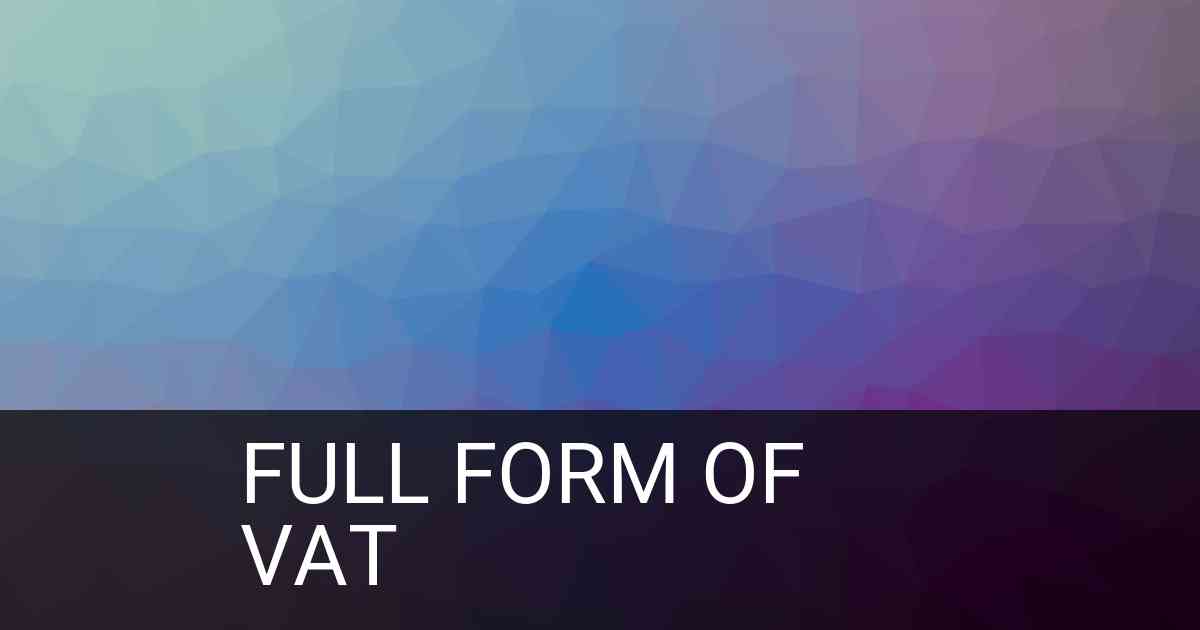
The Full Form of ‘VAT’ in Education is ‘Value Added Tax’.
Full Form of VAT
Value Added Tax (VAT) is a form of taxation that applies to the sale and purchase of goods and services. It is widely used in many countries around the world, including the United Kingdom and much of Europe. In education, it is also known as VAT Education Tax or VATET.
The purpose of VAT is to increase revenue for governments by charging a fee on certain goods or services. The tax rate can vary depending on the country it is being applied in, but generally it is applied at a rate between 15-25%. It is paid by customers when they buy something from a business, and this money goes directly to the government. Companies then have to pay back any taxes they have collected from their customers plus an additional amount based on their profits.
VAT has been an important source of revenue for governments since it was first introduced in 1973 and has become increasingly popular in recent years due to its ability to capture more money from consumers than income taxes or other forms of taxation. This makes it an attractive option for many countries looking to raise money without raising income taxes significantly or increasing public debt levels.
VAT is particularly relevant in education because educational institutions commonly provide goods and services that are subject to the tax. For example, tuition fees for universities and other higher education institutions are typically subject to VAT, as well as textbooks, software, equipment and even catering services provided by educational establishments throughout the EU.
In addition, due to how VAT works, educational institutions often benefit financially from collecting VAT from their students because they can claim back some of the tax they have collected from customers once a year through a process called ‘refunding’. This refund helps educational institutions keep more of their profits by reducing their costs associated with providing services such as tuition fees.
Although there are both advantages and disadvantages associated with Value Added Tax (VAT), its importance cannot be overstated when it comes to providing revenue for governments while helping educational establishments reduce costs associated with providing services such as tuition fees. As such, understanding how VAT works can be key for any business or institution operating within its scope – especially those involved in education – so they can make sure they are compliant with all legislation related to it and ensure that all applicable payments are made correctly each year.
Queries Covered Related to “VAT”
- What is the full form of VAT in Education?
- Explain full name of VAT.
- What does VAT stand for?
- Meaning of VAT

